- General
- Updated on March 19, 2024
Exploring Famous Prasads at Indian Temples that are Must-Try
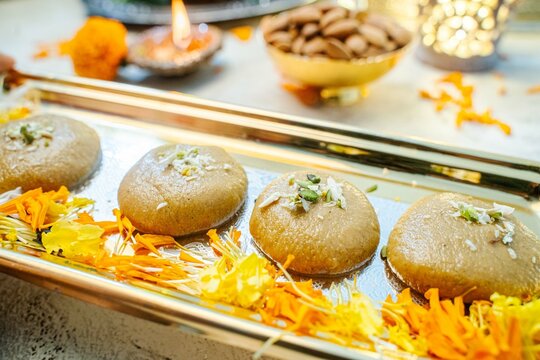
Introduction
In India, a visit to the temple isn’t just about seeking blessings. It’s often a delightful cultural and culinary experience. Temples across the country offer unique prasad, food offered to the deities and then shared with devotees. These prasads range from sweet treats to savory delights, and each region boasts its own specialties. Today, we’ll embark on a delicious journey through some of India’s must-try prasads at famous Indian Temples!
What is Prasad?
In Sanskrit, “Prasad,” translating to “grace,” refers to food offered to a deity during a puja (prayer ceremony), believed to be blessed, symbolizing receiving the god’s grace. The prasads of famous Indian temples are renowned for their divine taste and spiritual significance.
Also Read: Arun Yogiraj: The Master Sculptor Behind Ram Lalla’s Idol
Must Try Prasads at Famous Indian Temples
Let’s embark on a mouthwatering adventure through some of India’s most unique prasads!
1. Makhan Mishri at Shri Banke Bihari Temple, Vrindavan
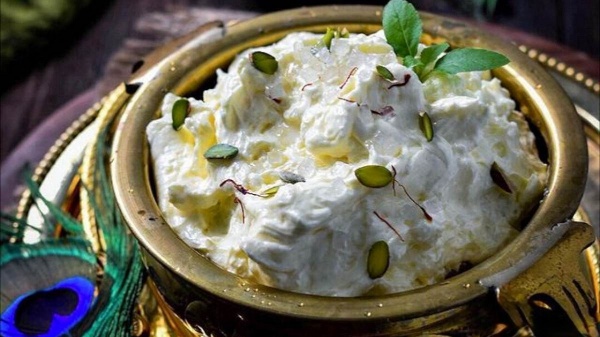
Step into the world of Krishna’s playful childhood at the Vrindavan temple dedicated to him. Here, the prasad reflects his love for butter (Makhan) and features Makhan Mishri, a delightful combination of butter and sugar.
2. Divine Dry Fruits and More at Mata Vaishno Devi Temple, Katra
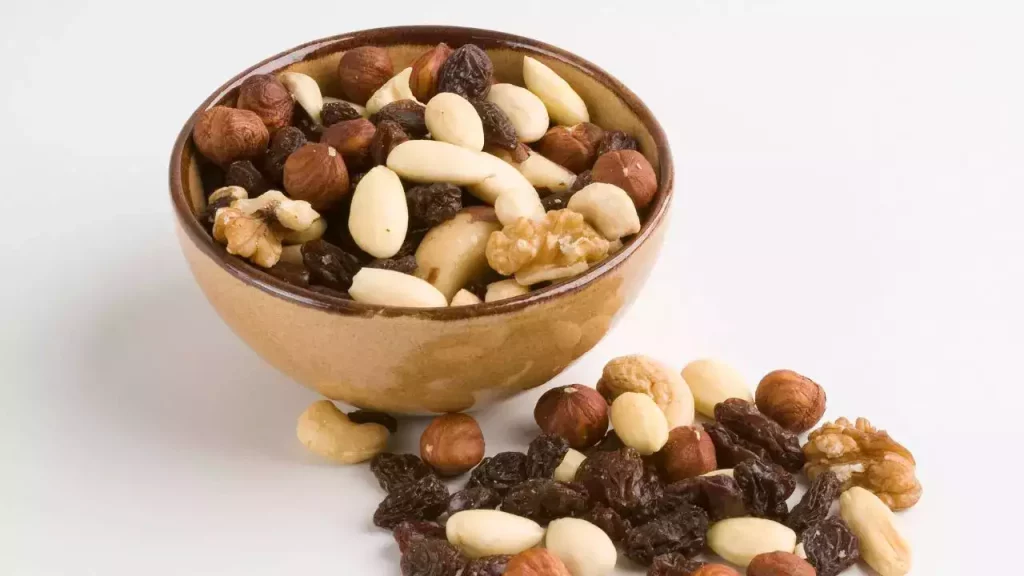
After a challenging trek to the shrine of Mata Vaishno Devi, a sweet and wholesome prasad awaits. This prasad includes puffed rice (murmura), cardamom (ilaichidana), sugar balls, dry fruits, and the unique touch – sun-dried apples!
3. Tirupati Laddu at Tirumala Venkateswara Temple
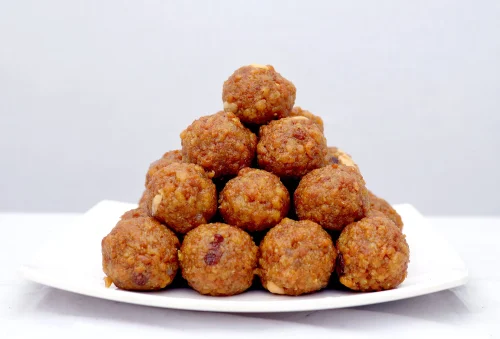
The Tirupati Laddu, offered at the Tirumala Venkateswara Temple in India, is legendary for its taste and cultural significance. Made with gram flour, ghee, sugar, and dry fruits, this melt-in-your-mouth sweet boasts a unique recipe with a Geographical Indication (GI) tag. Not just a delicious treat, the Laddu is believed to be blessed by Lord Venkateswara himself. With its popularity, the temple even has a special team dedicated to meticulously preparing these laddus daily, making them a must-try for any temple visitor.
4. Kada Prasad at Golden Temple, Amritsar
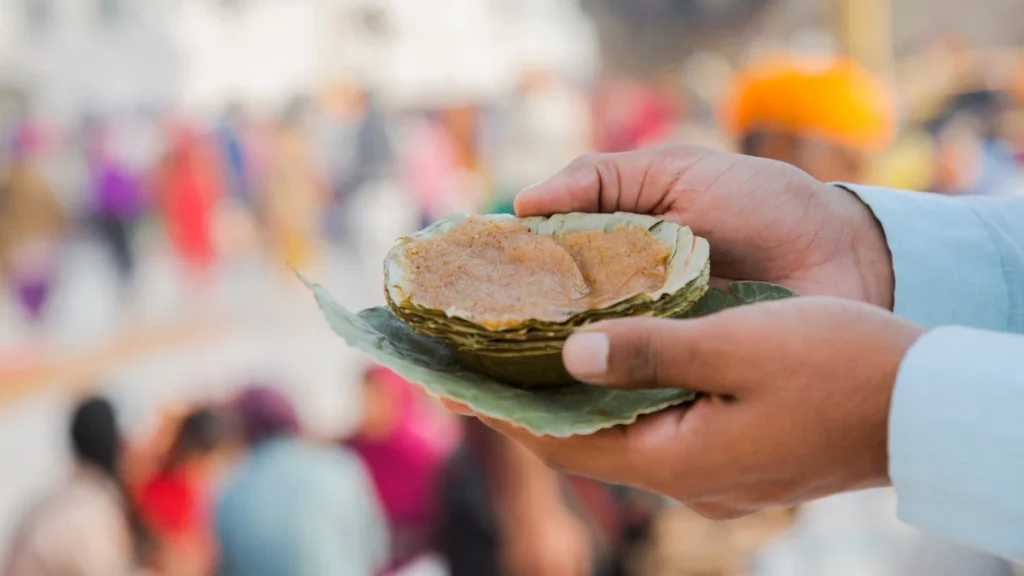
The Harmandir Sahib, or Golden Temple, in Amritsar, offers a prasad as simple as its message of peace and equality. Kada Prasad is made with just flour, ghee, sugar, and water, yet the spiritual significance and community aspect imbue it with a unique flavor.
6. Mahaprasad at Jagannath Temple, Puri
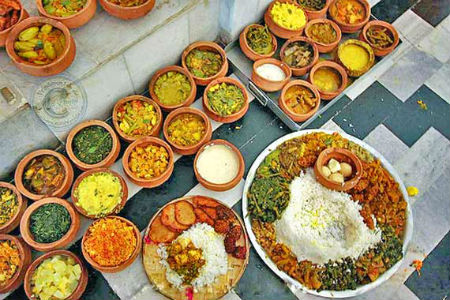
Puri, the abode of Lord Jagannath, is also home to the world’s largest temple kitchen! Here, a 56-course vegetarian meal called Mahaprasad is offered to the deity, famously known as ‘Abhada’. Visitors come from near and far to receive this holy food, which is a spread of various dishes like khichdi, dal, vegetables, and sweets. Additionally, this prasad is not just food; it’s a divine experience, cooked in the largest temple kitchen in India and blessed by Lord Jagannath himself. To get the Mahaprasad, you join the crowd after the temple rituals, where it’s served on banana leaves, symbolizing tradition and purity. Moreover, eating Abhada is an act of devotion, filled with the spirit of sharing and community, embodying the essence of the temple’s spiritual ambiance.
7. Saagar and Thor from Shrinathji Temple, Nathdwara
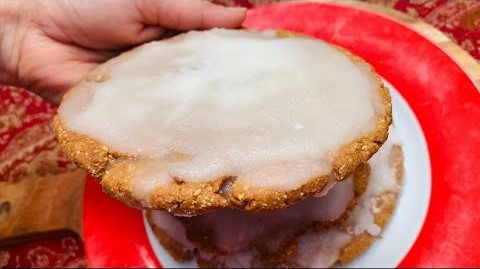
At Nathdwara’s Shrinathji Temple, you’ll find a special treat named Thor. This sweet dish, a local favorite, uses wheat flour dipped in chashni, a sweet sugar syrup. It’s part of the delicious prasad given out at the temple, alongside laddoo and mathari. During winter, they also serve Saagar, a jaggery-like treat filled with nuts and sweeteners. The temple offers two prasad choices: a simpler one for all and a spicier Tapeli bhog for the priests. Additionally, devotees lovingly make both dishes, infusing them with rich flavor that captures the spirit of the temple in every bite.
8. Lal Peda at Sankat Mochan Hanuman Temple, Varanasi
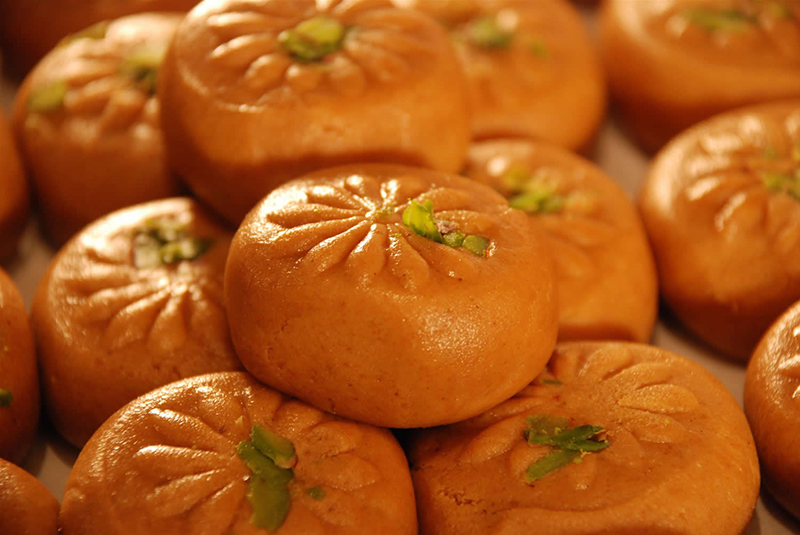
Seeking blessings to overcome troubles? The Sankat Mochan Hanuman Temple in Varanasi offers a prasad as vibrant as the god himself. Lal Peda, a red-colored sweet made from milk, sugar, and cardamom, is a delicious way to appease Lord Hanuman.
9. Chinese Food at Kolkata’s Chinese Kali Temple
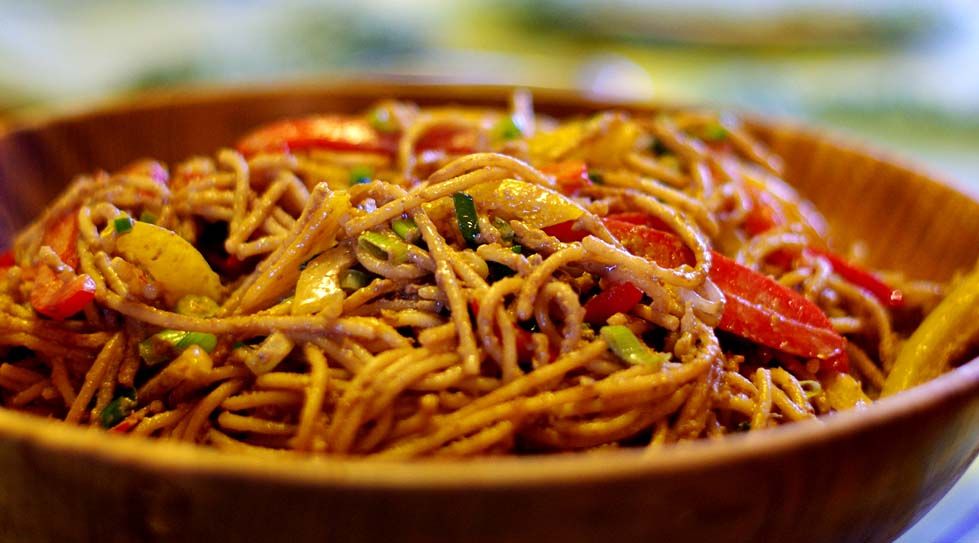
In Kolkata’s Tangra, also known as Chinatown, there’s a unique ‘Chinese Kali Temple’ where two worlds meet. Usually, the Chinese and Hindu locals don’t mix much. But during Kali Puja, they come together at this temple. Here, they offer different kinds of prasad – noodles, chopped suey, rice, and veggies. Moreover, It’s a special time when both communities join to pray and share these tasty dishes as blessings from the goddess Kali.
10. Peda and Panchmeva at Khatu Shyam Temple, Khatu

Khatu Shyam Ji is particularly famous for the ‘Panchmeva’ prasad, a mix made with almonds, cashews, dried dates, crystallized sugar lumps, and raisins. Additionally, you can taste the ‘Mawa Pedas’, milk-based sweets that are offered to him as part of the worship.
11. Appam and Aravana Payasam at Sabarimala Ayyappa Temple
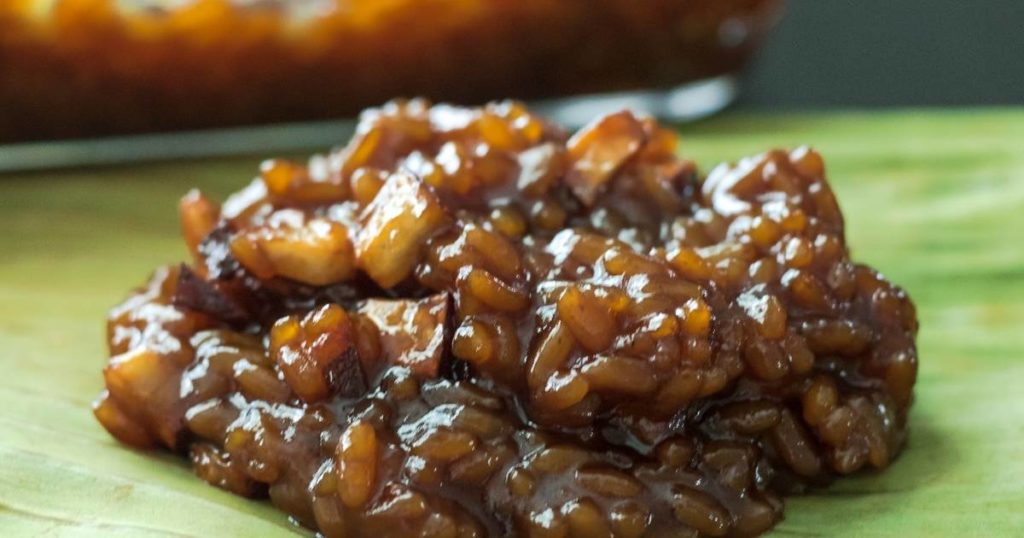
Embark on a pilgrimage to the Sabarimala Ayyappa Temple in Kerala and be greeted by the flavors of appam, a type of pancake, and aravana payasam, a red rice and jaggery pudding. In addition, this vegetarian prasadam is a perfect way to end your spiritual journey.
12. Modak at Siddhivinayak Temple, Mumbai
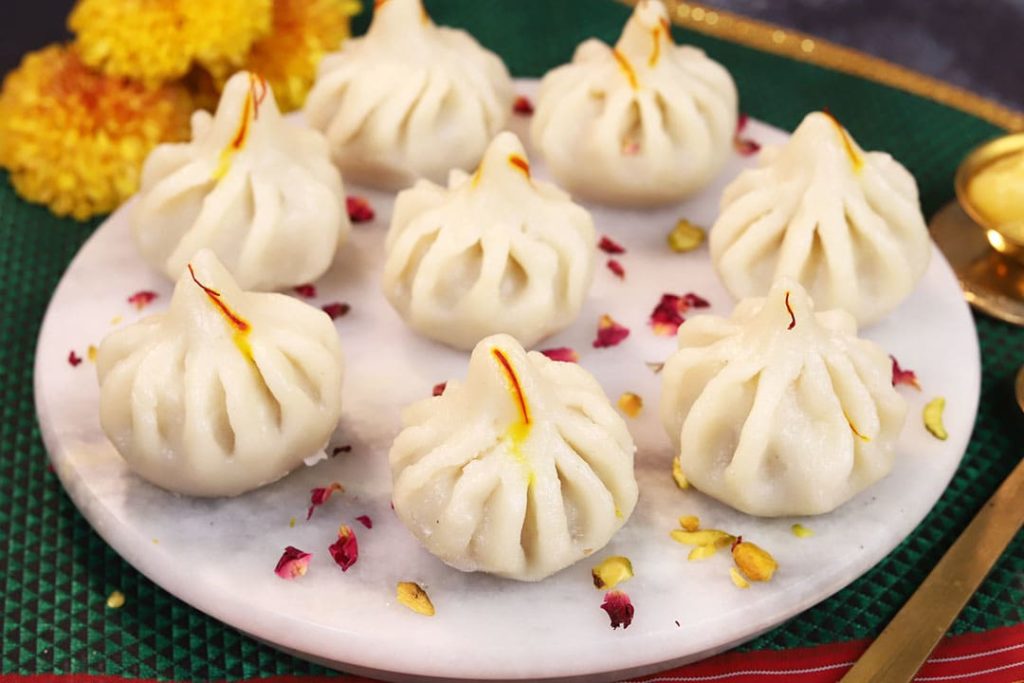
In Mumbai’s famed Siddhivinayak Temple, a delicious tradition awaits. Here, Modak, is offered as prasad to Lord Ganesha. Made with a soft rice flour exterior and a delectable coconut and jaggery filling, these crescent-shaped treats are a symbolic favorite of the elephant god. After being blessed, the modaks are distributed to devotees.
Conclusion
So, the next time you visit a temple in India, don’t forget to explore the tasty prasads of famous Indian Temples! It’s a delicious way to connect with the local culture, traditions, and most importantly, the divine.
Join the discussion
Related Articles
No results available
ResetTrending Articles


- Health
- Updated on November 24, 2025


- General
- Updated on November 24, 2025


- General
- Updated on November 19, 2025


- General
- Updated on November 19, 2025


- General
- Updated on November 14, 2025


- Tech
- Updated on November 12, 2025


- General
- Updated on November 8, 2025


- General
- Updated on November 6, 2025


- Sports
- Updated on November 5, 2025


- General
- Updated on November 4, 2025
No results available
Reset


